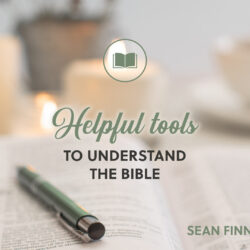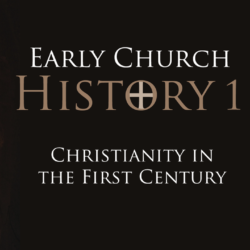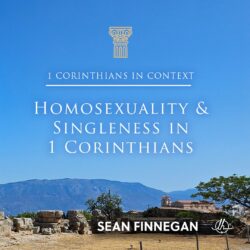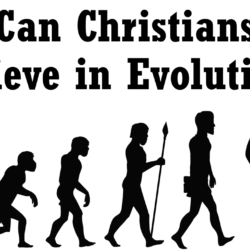This is part 17 of the Read the Bible For Yourself.
After reviewing the resources you can use to learn Hebrew, Aramaic, and Greek, we delve into the sources that translators use for their work. Next, we’ll look at translation philosophies, including formal and dynamic equivalence. Lastly we’ll cover the controversial issues of gender accuracy and translation bias. Over all, this episode should give you a nice introduction to a deep answer for what translations you should use and why.
Listen to this episode on Spotify or Apple Podcasts
—— Links ——
- See other episodes in Read the Bible For Yourself
- Other classes are available here, including How We Got the Bible, which explores the manuscript transmission and translation of the Bible
- Get the transcript of this episode
- Support Restitutio by donating here
- Join our Restitutio Facebook Group and follow Sean Finnegan on Twitter @RestitutioSF
- Leave a voice message via SpeakPipe with questions or comments and we may play them out on the air
- Intro music: Good Vibes by MBB Attribution-ShareAlike 3.0 Unported (CC BY-SA 3.0) Free Download / Stream: Music promoted by Audio Library.
- Who is Sean Finnegan? Read his bio here
—— Notes ——
17 How to Choose a Bible Translation
Translation basics
- Fee & Stuart: “Your Bible, whatever translation you use, which is your beginning point, is in fact the end result of much scholarly work. Translators are regularly called upon to make choices regarding meanings, and their choices are going to affect how you”[1]
- “Every translation is a commentary” -Lee Brice
The Bible is in three languages.
- Hebrew: Old Testament except the Aramaic part
- Nearly 99% of the OT (22,945 of 23,213 verses)
- Aramaic: half of Daniel and two passages in Ezra
- Daniel 2.4b-7.28; Ezra 4.8-6.18; 7.12-26
- About 1% of the OT (268 of 23,213 verses)
- Greek: New Testament (all 7,968 verses)
How to begin learning Hebrew or Greek
- Immersion program in Israel or Greece
- Whole Word Institute offers a 9-month program.
- In-person college class (usually 2 semesters)
- Local colleges, RTS offers an 8-week summer program.
- In-person classes at a Jewish synagogue or Greek church or community center
- Online program with live instructor
- Biblical Language Center, Liberty University, etc.
- Digital program with pre-recordings
- Aleph with Beth (YouTube), Bill Mounce’s DVD
course, etc.
- Aleph with Beth (YouTube), Bill Mounce’s DVD
How to improve your existing knowledge of Hebrew or Greek
- Reading group in-person or online
- Read a portion each week together.
- Daily dose of Hebrew/Greek/Aramaic
- Daily YouTube videos of one verse each (email list)
- Read every day.
- Read the Bible; read devotionals; read comic books (Glossa House produces great resources)
- Watch modern Hebrew and Greek shows.
- Izzy is like Netflix for Israel/Hebrew
- Greece has lots of channels streaming online.
Translation process (1 Timothy 2:5 example)
- Greek New Testament (NA28)
Εἷς γὰρ θεός,
εἷς καὶ μεσίτης θεοῦ καὶ ἀνθρώπων,
ἄνθρωπος Χριστὸς Ἰησοῦς - Literal translation
One for god,
one and mediator of god and men,
man Christ Jesus - Finished translation
For (there is) one God, and (there is) one mediator between God and mankind, (the) man Christ Jesus.
New Testament critical editions
- Nestle Aland 28th Edition (NA28) based on the Editio Critica Maior (ECM), which employs the coherence based genealogical method (CBGM)
- Tyndale House Greek New Testament (THGNT) prioritizes trusted physical manuscripts over the CBGM.
Old Testament critical editions
- Biblia Hebraica Stuttgartensia (BHS) and the partially completed Biblia Hebraica Quinta (BHQ) print the Leningrad Codex in the main text, but include alternative readings in the footnotes.
- Hebrew Bible Critical Edition (HBCE) by Ronald Mendel is a project of the Society of Biblical Literature (SBL) to develop a critical edition.
Resources to see decisions about alternative readings
- NET Bible (accessible here)
- New Testament Text and Commentary by Philip Comfort
- A Textual Commentary on the Greek New Testament by Bruce Metzger
Formal equivalence translation philosophy
- Fee & Strauss: “If the Greek or Hebrew text uses an infinitive, the English translation will use an infinitive. When the Greek or Hebrew has a prepositional phrase, so will the English…The goal of this translational theory is formal correspondence as much as possible.”[2]
- Ron Rhodes: “Formal equivalence translations can also be trusted not to mix too much commentary in with the text derived from the original Hebrew and Greek manuscripts. To clarify, while all translation entails some interpretation, formal equivalence translations keep to a minimum in intermingling interpretive additives into the text. As one scholar put it, ‘An essentially literal translation operates on the premise that a translator is a steward of what someone else has written, not an editor and exegete who needs to explain or correct what someone else has written.’”[3]
Dynamic equivalence translation philosophy
- Ron Rhodes: “Dynamic equivalence translations generally use shorter words, shorter sentences, and shorter paragraphs. They use easy vocabulary and use simple substitutes for theological and cultural terminology. They often convert culturally dependent figures of speech into easy, direct statements. They seek to avoid ambiguity as well as biblical jargon in favor of a natural English style. Translators concentrate on transferring meaning rather than mere words from one language to another.”[4]
Formal vs. dynamic comparison
- Formal Equivalence Dynamic Equivalence
- Formal Correspondence Functional Equivalence
- Word for Word Thought for Thought
- Literal Readable
- Transparent to Originals Replicates Experience
- Transfer Interpretation Interpretation Built In
- Accurate Easy to Understand
Formal equivalence Bibles
- ESV: English Standard Version
- NASB: New American Standard Bible
- LSB: Legacy Standard Bible
- NRSV: New Revised Standard Version
- HCSB: Holman Christian Standard Bible
Gender Accuracy[5]
- “Man” used to mean “men and women”
- “Men” used to mean “men and women”
- “he” used to mean “he or she”
- Translations are changing with the changes in the English language so that female readers recognize the relevance of scripture to them
- See Eph 4:28; Mat 11:15; etc.
Combatting bias
- To combat bias, look at translations from different thought camps.
- Evangelical: NIV, NLT, ESV, NASB, NET, CSB, HCSB, LEB MSG, Passion, Amplified, LSB, CEV, TEV/GNT, NCV, NIrV
- Jewish: JPS, KJB, Stone, Robert Altar, Shocken
- Catholic: NABRE, NAB, RNJB, NJB, JB, Douay-Rheims
- Mainline: NRSV, NEB, RSV, ASV, KJV
- Unitarian: REV, NWT, Diaglott, KGV, Buzzard, NEV
Review
- If you can, learn the biblical languages so you can read the actual words of scripture rather than depending on a translation.
- Translations of the New Testament depend on the Greek critical text known as the Nestle Aland 28th edition (NA28).
- Translations of the Old Testament depend on the Leningrad Codex, which is printed in the Biblia Hebraica Stuttgartensia (BHS) and the partially complete Biblia Hebraica Quinta (BHQ). In addition, translators of the Old Testament are expected to look through the footnotes and commentary in these resources to judge readings from other sources.
- Over generations, textual critics have developed strategies and computer tools to more closely approximate the original text. As a result, newer critical texts contain reconstructions of an older stage of the text.
- Translation is the art of rendering a source text into a receptor language accurately.
- Formal equivalence translations focus on transparency to the source text and a minimum of added interpretation.
- Dynamic equivalence translations focus on readability in the receptor language. They seek clarity over ambiguity.
- Formal equivalence translations are safer, because they leave it up to the reader to figure out what a text means. However, they can contain awkward English and be difficult to read.
- Gender accuracy refers to the translation practice of including the feminine when a hypothetical singular masculine pronoun can refer to either sex or when masculine plurals include both genders.
- Bias is intrinsic to translation, especially with reference to doctrines that are widely held by committee members.
- The best way to expose and combat bias is to check translations from different thought camps. Although evangelical translations are better known, checking Jewish, mainline, Catholic, and unitarian translations provides a helpful corrective.
[1] Gordon D. Fee and Douglas Stuart, How to Read the Bible for All Its Worth (Grand Rapids, MI: Zondervan, 2014), 23.
[2] Gordon Fee and Mark Strauss, How to Choose a Translation for All Its Worth (Grand Rapids: Zondervan, 2007), p. 26.
[3] Ron Rhodes, The Complete Guide to Bible Translations (Eugene, OR: Harvest House Publishers, 2009), p. 30. Quotation from Leland Ryken, Choosing a Bible (Wheaton: Crossway, 2005), p. 27.
[4] Ron Rhodes, The Complete Guide to Bible Translations (Eugene, OR: Harvest House Publishers, 2009), pp.
32-33.
[5] For a much deeper dive into this interesting topic, see session 15 from How We Got the Bible: Gender in Bible Translation, available on lhim.org or on YouTube.






